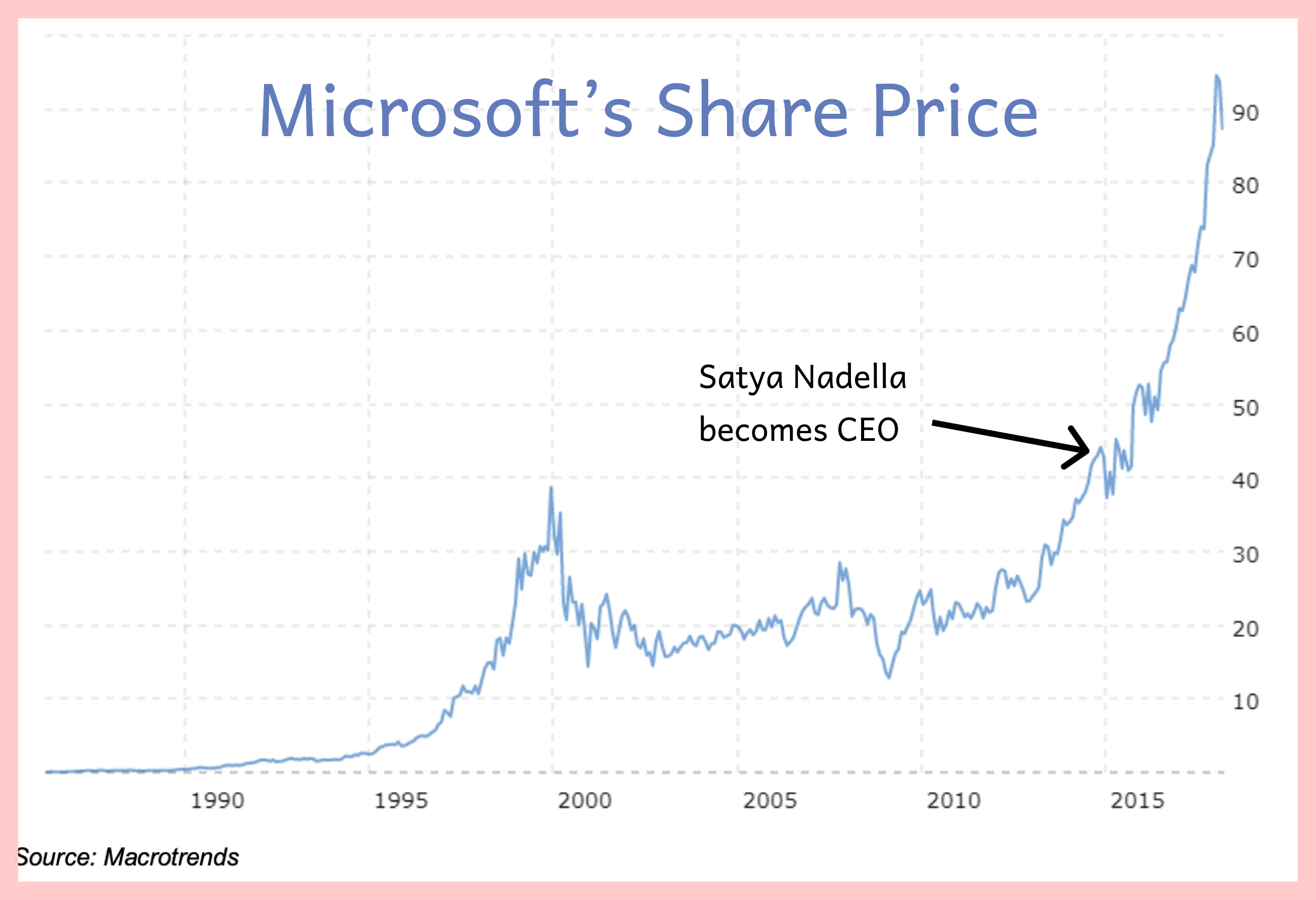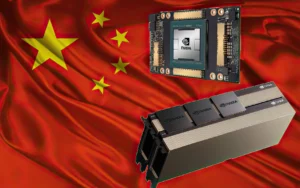Introduction:
Founded by Bill Gates and Paul Allen on April 4, 1975, in Albuquerque, New Mexico, Microsoft has evolved from a small startup with humble beginnings to a global powerhouse that has shaped the way we work, communicate, and connect with the world. Their initial success came with MS-DOS, an operating system licensed to IBM for its groundbreaking PCs.
As of May 2024 Microsoft has a market cap of $2.956 Trillion. This makes Microsoft the world’s most valuable company by market cap. As we celebrate 40 years of Microsoft’s remarkable journey, it’s awe-inspiring to reflect on the company’s exponential growth, from generating $197 million in revenue to a staggering $244 billion.
Join us as we take a detailed look at Microsoft’s transformative journey, the key milestones that have defined its success over the past four decades, and the impact it has had on the world.
We always overestimate the change that will occur in the next two years and underestimate the change that will occur in the next ten. Don’t let yourself be lulled into inaction.
~Bill Gates
Follow us on LinkedIn for everything around Semiconductors & AI
Beginnings
The founding story of Microsoft goes back to a childhood friendship between two tech whizzes: Bill Gates and Paul Allen.
1975: Birth of an Idea: Inspired by an article about the Altair 8800, an early personal computer, Gates and Allen decided to develop a programming language (BASIC interpreter) compatible with it. They saw a future for personal computers and wanted to be a part of it.
The Name and The Company: Allen came up with the name “Micro-Soft,” a combination of “microcomputer” and “software.” On April 4, 1975, Microsoft was officially founded in Albuquerque, New Mexico.
Deal with MITS: The company that produced the Altair 8800, MITS, agreed to distribute Gates and Allen’s BASIC interpreter, marketing it as Altair BASIC. This initial success validated their concept.
Going Global: By 1977, Microsoft had established its first international office in Japan. The company was starting to grow beyond the US market.
The IBM PC and MS-DOS: A pivotal moment came in 1980 when IBM approached Microsoft to provide an operating system for their upcoming personal computer (IBM PC). Microsoft purchased an existing operating system (DOS) and modified it, creating MS-DOS (Microsoft Disk Operating System). This deal was a game-changer, as MS-DOS became the dominant operating system for early IBM PCs and compatible machines.
The Rise of Windows: While MS-DOS was a text-based interface, Microsoft recognized the need for a more user-friendly graphical user interface (GUI). In 1985, they released Microsoft Windows, which revolutionized personal computer interaction and solidified Microsoft’s position as a major player in the software industry.
1975-1990: The Early Years and the Rise of Windows
In the early years, Microsoft made its mark by developing programming languages and software for early personal computers.
The launch of MS-DOS (Microsoft Disk Operating System) in 1981 solidified the company’s position in the burgeoning PC industry, laying the foundation for its future success. 
However, it was the introduction of Windows in 1985 that would change the course of computing history.
The 1980s saw the introduction of Windows, a graphical user interface (GUI) that revolutionized how people interacted with computers. Windows’ intuitive design, compared to the text-based MS-DOS, made computers more accessible to everyday users. Subsequent versions of Windows, like Windows 95 and XP, solidified Microsoft’s dominance in the desktop operating system market.
With its graphical user interface and multitasking capabilities, Windows became the dominant operating system, catapulting Microsoft to the forefront of the industry.
Read More: 6 Ways Qualcomm Challenges Intel in the Battle for PC Dominance – techovedas
1990-2000: The Era of Innovation and Expansion
During the 1990s, Microsoft continued to innovate and expand its product portfolio, introducing iconic software such as Microsoft Office, Internet Explorer, and Windows NT.
The acquisition of companies like Hotmail and Visio further strengthened its presence in the burgeoning internet and productivity software markets.
Microsoft’s relentless focus on innovation and strategic acquisitions fueled its rapid growth, leading to a significant increase in revenue and market capitalization.
Microsoft Word remains a dominant force in the word processing industry, setting the standards for what a powerful and user-friendly tool should be.
2000-2010: Challenges and Renewed Focus
The dawn of the new millennium brought both opportunities and challenges for Microsoft.
While the company continued to dominate the PC market, it faced increasing competition from rivals like Google and Apple in emerging areas such as search, mobile, and cloud computing.
Here’s what Microsoft was facing before Satya Nadella became CEO in 2014:
Missing the Mobile Wave: While Microsoft dominated desktop computing with Windows, they largely missed the mobile revolution. Apple’s iOS and Google’s Android dominated the smartphone and tablet market, leaving Microsoft’s Windows Phone struggling.
Search Engine Struggles: Microsoft’s search engine, Bing, couldn’t compete with Google’s dominance in online search.
Stagnant Innovation: The company was seen as less innovative compared to its past, struggling to keep pace with the rapid advancements in technology.
Declining Stock Price: Reflecting these challenges, Microsoft’s stock price had been stagnant for several years.
Overall, Microsoft risked becoming irrelevant in a rapidly changing technological landscape. They needed a leader to navigate these challenges and revitalize the company.
2010-Present: Satya Nadella Changed the Game
Over the past decade, Microsoft has emerged as a leader in cloud computing, with Azure becoming one of the fastest-growing cloud platforms in the world.
The mobile-first, cloud-first is a very rich canvas for innovation – it is not the device that is mobile, it is the person that is mobile.
~Satya Nadella
Satya Nadella joined Microsoft in 1992 and rose through the ranks before becoming CEO in 2014. His leadership marked a significant shift for the company:
Cloud-First Approach: Traditionally focused on Windows, Microsoft pivoted to cloud computing under Nadella. Azure, their cloud platform, became a major competitor to Amazon Web Services (AWS).
Cultural Transformation: Nadella fostered a more collaborative and growth-oriented company culture. He emphasized empathy, learning, and working with former competitors like Apple and Linux.
Focus on Customers: Microsoft shifted its focus to what customers needed. This made their products like Office available on rival platforms like Android and iOS.
These changes have been instrumental in Microsoft’s continued success:
Market Dominance: The company’s stock price has skyrocketed under Nadella, reaching a valuation of over $2 trillion.
Innovation: Microsoft has made significant strides in artificial intelligence and other emerging technologies.
Overall, Satya Nadella’s leadership has been a key factor in Microsoft’s transformation into a cloud-focused leader and a dominant force in the tech industry.
The acquisition of LinkedIn in 2016 and GitHub in 2018 further expanded Microsoft’s reach and capabilities, such as solidifying its position as a key player in the tech ecosystem.
Read More: 5 Step Method To Build Your First Electronic Gadget With Arduino – techovedas
Conclusion:
As Microsoft celebrates 40 years of innovation, it’s clear that the company’s journey from $197 million to $244 billion in revenue is a testament to its resilience, vision, and commitment to excellence.
From revolutionizing the way we interact with computers to pioneering breakthroughs in cloud computing and artificial intelligence, such as Microsoft has left an indelible mark on the world of technology.
As we look to the future, one thing is certain—Microsoft’s legacy of innovation and impact will continue to inspire generations to come.




